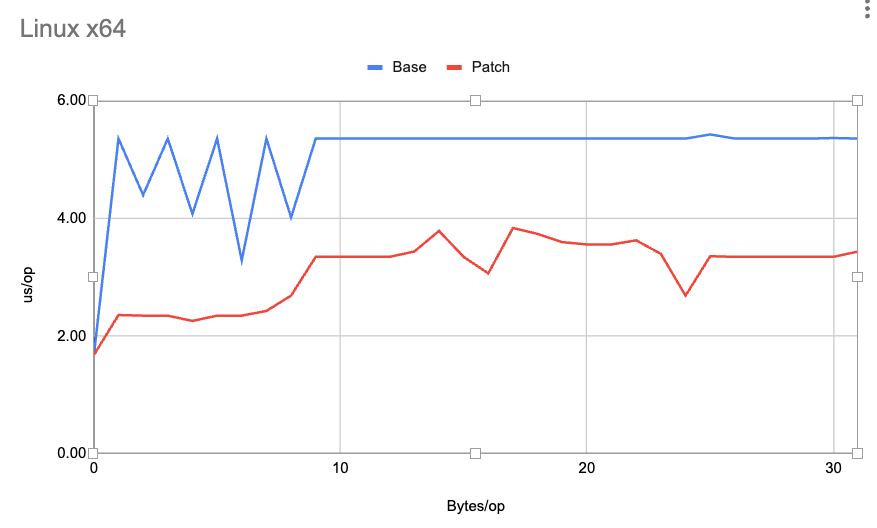Introduction: Reshaping Java’s Memory and Performance Landscape
For decades, Java’s object model has been a cornerstone of its success, offering a powerful and consistent way to represent complex data. However, this model comes with an inherent trade-off: performance. Every object in Java, no matter how small, carries the overhead of an object header and lives on the heap as a separate allocation, accessed via a pointer. This indirection can lead to memory bloat and poor cache locality, creating a performance gap between primitive types (like int) and their object counterparts (like Integer). Project Valhalla, one of the most anticipated initiatives in the OpenJDK, aims to bridge this gap. It’s not just an incremental update; it’s a fundamental rethinking of the relationship between data and identity in the JVM. By introducing concepts like primitive classes and a sophisticated “larval” object state, Valhalla promises to unlock a new level of performance, enabling developers to write code that is both highly abstract and mechanically sympathetic to modern hardware. This article delves into the latest developments from Project Valhalla, exploring how these changes will revolutionize the Java ecosystem, from core libraries to enterprise applications built with Spring and Hibernate.
The Core Problem: The High Cost of Object Identity
To understand the significance of Project Valhalla, we must first appreciate the problem it solves: the overhead of universal object identity. In today’s Java, every time you use the new keyword, you create an object with a unique identity, distinct from any other object, even if they hold the same data. This identity is stored in the object’s header and allows for behaviors like locking (synchronized) and identity-sensitive comparisons (==).
From Pointers to Flat Memory
While essential for many programming patterns, this mandatory identity is often unnecessary and costly. Consider a simple Point class used in a graphics application. If you create an array of one million points, you aren’t creating a single, contiguous block of memory for two million integers. Instead, you’re creating an array of one million *pointers*, each referring to a separate Point object scattered across the heap. This is known as an “array of structures” vs. a “structure of arrays” problem and it has serious performance implications:
- Memory Overhead: Each
Pointobject has a header (typically 8-16 bytes) in addition to its data (8 bytes for two integers). This can nearly double the memory footprint. - Poor Cache Locality: When iterating through the array, the CPU has to jump around in memory to fetch each
Pointobject. This leads to frequent cache misses, which are orders of magnitude slower than cache hits.
Let’s look at the current state of affairs with a standard Java class.
// Point.java - A standard Java object
public final class Point {
private final int x;
private final int y;
public Point(int x, int y) {
this.x = x;
this.y = y;
}
// Getters, equals, hashCode...
}
// Inefficient memory layout
public class PointProcessor {
public static void main(String[] args) {
// This creates an array of references, not an array of points.
// Memory layout: [ref_to_p0, ref_to_p1, ref_to_p2, ...]
// The actual Point objects are scattered elsewhere on the heap.
Point[] points = new Point[1_000_000];
for (int i = 0; i < points.length; i++) {
points[i] = new Point(i, i);
}
}
}In contrast, an array of primitives like int[] is a dense, contiguous block of memory. The JVM and the underlying hardware are highly optimized for this layout. Project Valhalla’s goal is to allow developers to create user-defined types that can achieve this same “flat” and “dense” memory layout, combining the performance of primitives with the expressiveness of classes. This is where primitive classes come in.
The Solution: Primitive Classes and the “Larval” State
The terminology and specific syntax within Project Valhalla have evolved over years of research and prototyping. The latest and most promising direction centers on the concept of **primitive classes** (formerly referred to as value types). A primitive class is a special kind of class that lacks object identity. Instances of these classes are simply “values,” defined entirely by the data they contain.

Introducing Primitive Classes
The proposed syntax (which is still subject to change) might involve declaring a class as primitive. This signals to the compiler and JVM that instances of this class can be treated differently. They can be flattened in arrays, passed by value in method calls, and stored directly in object fields or CPU registers without the need for a pointer.
// Proposed syntax for a primitive class
// This class has no identity. Its instances are just values.
primitive final class Point {
private final int x;
private final int y;
public Point(int x, int y) {
this.x = x;
this.y = y;
}
// Getters, equals, hashCode...
}
// Efficient memory layout
public class FastPointProcessor {
public static void main(String[] args) {
// With Valhalla, this creates a flat, contiguous array of x, y pairs.
// Memory layout: [x0, y0, x1, y1, x2, y2, ...]
// This is incredibly cache-friendly.
Point[] points = new Point[1_000_000];
for (int i = 0; i < points.length; i++) {
points[i] = new Point(i, i);
}
}
}This single change has a profound impact. The Point[] is now as efficient as an int[] or long[], eliminating memory overhead and dramatically improving data locality. This is a game-changer for high-performance computing, big data processing, and any domain where data density matters. This evolution is a key topic in recent Java performance news and JVM news.
The Initialization Conundrum: The “Larval” State
A major design challenge emerges from this identity-less world: how do you construct an immutable primitive object? In a regular constructor, the this reference points to a newly allocated object shell. You can then assign its final fields. But if a primitive object has no identity and is immutable, how can it exist in a partially initialized state? You can’t have a half-built value.
This is where the elegant concept of a **”larval” state** comes in. The Valhalla team devised this solution to balance safety with developer ergonomics. During its construction, and *only* within its constructor, a primitive object exists in a temporary, “larval” state. In this state:
- It has a temporary, non-abiding identity.
- Its fields can be assigned, even if they are declared
final. - The
thisreference is usable within the constructor’s scope.
Once the constructor completes successfully, the object “molts.” It sheds its temporary identity and becomes a pure, immutable value. This clever design allows developers to write constructors in the familiar Java style, while the JVM enforces the integrity of the final value object.
Advanced Applications and Ecosystem Impact
The implications of Project Valhalla extend far beyond simple data classes. They will ripple through the entire Java ecosystem, from core APIs to major frameworks like Spring and Hibernate, influencing everything from Java concurrency news to Reactive Java news.
Universal Generics: The Holy Grail
One of Valhalla’s primary goals is to enable **Universal Generics**. Currently, Java’s generics only work with reference types. You cannot have an ArrayList<int>; you must use the boxed ArrayList<Integer>, which reintroduces the performance problems of indirection and memory overhead. Primitive classes are designed to be compatible with generics. This means we will finally be able to write code like ArrayList<Point> or even ArrayList<int>, and the JVM will be able to create a specialized, high-performance implementation without any boxing.

import java.util.ArrayList;
import java.util.List;
// A primitive class representing a complex number
primitive final class Complex {
private final double real;
private final double imag;
public Complex(double real, double imag) {
this.real = real;
this.imag = imag;
}
public Complex add(Complex other) {
// Operations create new values, upholding immutability.
return new Complex(this.real + other.real, this.imag + other.imag);
}
// ... other methods
}
public class GenericPerformance {
public static void main(String[] args) {
// With Valhalla, this List will be backed by a flat array of doubles.
// No boxing, no pointers, just raw performance.
List<Complex> complexNumbers = new ArrayList<>();
for (int i = 0; i < 1000; i++) {
complexNumbers.add(new Complex(i, -i));
}
// Processing this list will be significantly faster due to data locality.
Complex sum = new Complex(0, 0);
for (Complex c : complexNumbers) {
sum = sum.add(c);
}
System.out.println("Sum: " + sum);
}
}This will be a landmark update, impacting countless libraries and applications. It’s a frequent topic in discussions around future versions like Java 21 news and beyond, promising to simplify code and boost performance simultaneously.
Impact on Frameworks and Libraries
- Spring & Jakarta EE News: Data Transfer Objects (DTOs) are a perfect use case for primitive classes. Using them for request/response bodies in REST APIs could significantly reduce memory pressure and improve serialization/deserialization speed in frameworks like Spring Boot and Jakarta EE.
- Hibernate News: While core entities often need identity, components and embedded value types in Hibernate could be mapped to primitive classes. This would allow for more efficient storage and retrieval of composite data, leading to better database performance.
- JavaFX & Graphics: UI coordinates, colors, and vectors are ideal candidates for primitive classes. This could lead to a substantial performance boost in rendering pipelines and UI responsiveness, making JavaFX news very exciting in a post-Valhalla world.
Best Practices and Considerations for a Valhalla World
While Project Valhalla is still in development, we can already anticipate the best practices and potential pitfalls that will emerge. Adopting this new model will require a shift in thinking, moving away from an identity-centric view to a value-centric one where appropriate.
When to Use Primitive Classes
Primitive classes are ideal for data that acts as a simple aggregate or carrier. Think of them as “super primitives.”
- Data Carriers: DTOs, API responses, configuration objects.
- Mathematical Constructs: Complex numbers, vectors, matrices, money/currency types.
- Composite Keys: Multi-column primary keys in database mapping.
- Immutable Data: Any small, immutable object whose “sameness” is defined by its contents.
When to Avoid Primitive Classes
The absence of identity makes primitive classes unsuitable for certain roles. You should stick with regular classes for:
- Entities with Stable Identity: Anything that represents a unique entity, like a `User` or `Order` object mapped from a database.
- Objects for Synchronization: You cannot
synchronizedon a primitive class instance because it has no stable identity or monitor lock. - Polymorphic Hierarchies: While some support for interfaces is planned, complex polymorphic behavior is better suited to traditional objects.
- Singletons and Caches: Patterns that rely on a single, unique instance are fundamentally at odds with identity-less values.
A Critical Pitfall: Identity vs. Equality
A common source of bugs will be the misuse of the == operator. For regular objects, == checks for reference identity. For primitive classes, this check becomes less meaningful. The cardinal rule will be: **always use .equals() to compare primitive class instances.**
// Regular class behavior
String s1 = new String("hello");
String s2 = new String("hello");
System.out.println(s1 == s2); // false (different identities)
System.out.println(s1.equals(s2)); // true (same value)
// Proposed primitive class behavior
primitive final class MyValue {
private final int value;
// constructor, equals, etc.
}
MyValue v1 = new MyValue(100);
MyValue v2 = new MyValue(100);
// The '==' operator's behavior on primitive classes is still being finalized.
// It may be disallowed or behave like it does for primitives.
// To be safe and correct, ALWAYS rely on .equals().
System.out.println(v1.equals(v2)); // This will be the correct way: true
Conclusion: The Dawn of a New Era for Java Performance
Project Valhalla represents the most significant evolution of the Java platform since generics were introduced in Java 5. By carefully deconstructing the concept of object identity, the OpenJDK team is paving the way for a future where high-level abstraction and low-level performance are no longer at odds. Primitive classes, enabled by the clever “larval” state solution, will empower developers to write clearer, more efficient code that runs faster and consumes less memory. The impact will be felt across the entire Java ecosystem news landscape, from the core JVM and libraries like Maven and Gradle to enterprise giants like Spring Boot and Jakarta EE. While we await its final inclusion in a future Java SE release, developers should begin familiarizing themselves with these concepts. The journey to bring values to Java is a testament to the platform’s commitment to long-term evolution, ensuring it remains a dominant force in software development for decades to come.

